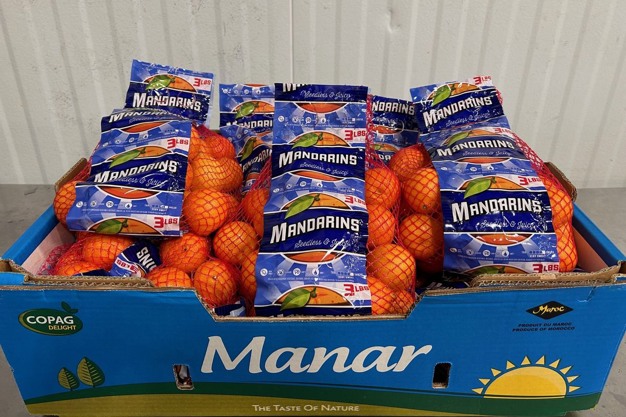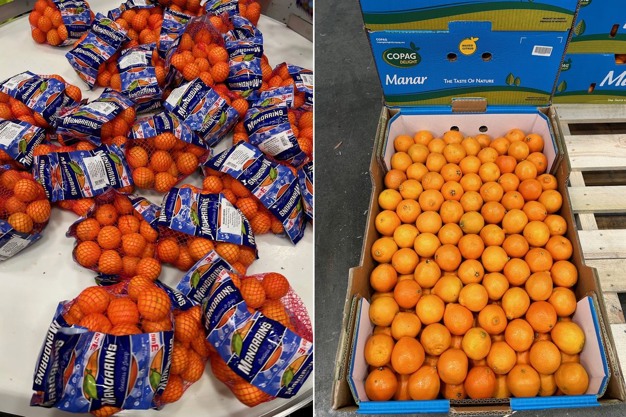Morocco is an important supplier of citrus to the US between November and April, driven by a free trade agreement between the two countries. This season, the North African country has been dealing with a drought, and as a result, the harvest of clementines has been very short, and volumes coming into the US have been lower than usual. In addition, demand from Europe and Russia for Moroccan clementines was strong, so a lot of fruit went to markets closer to home. “The drought conditions in Morocco seem to be worsening,” says Miles Fraser-Jones with Sierra Produce. While the growers work with the latest irrigation technologies, water availability is a big problem. “It’s a desert that is seeing very low annual rainfall.”

Large availability of small fruit
“Harvest of the Nour clementine variety is done, and we will receive the first Nadorcott mandarins from Morocco this week,” commented Fraser-Jones. The crop is expected to be normal for this late-season mandarin variety, although there might be some pressure on the size profile. Fraser-Jones anticipates the sizing to lean towards smaller fruit with a shortage of large-size fruit. Nevertheless, Sierra Produce looks forward to high-quality fruit with good color and a high brix level.
While volumes coming in from Morocco are lower this year, there is enough fruit between Morocco and domestic California supply to cover US demand. California usually sees a natural gap at the end of January for about two to three weeks when their clementine crop finishes before the mandarin harvest starts. “During that time of lower California supply, we expect to see increased demand for Moroccan citrus,” said Fraser-Jones.
Smaller Navel oranges from Morocco
While California is expected to have a usual clementine/mandarin crop, quality and sizing depend on weather conditions during the season. If a predicted storm comes this week, it would temporarily slow harvest and delay the crop by a few days. “As a result, bad weather on the West Coast can improve East Coast import demand,” said Fraser-Jones. On top of harvest delays, rainstorms could affect the quality towards the end of the season. For Navels, in particular, the Golden State has been dealing with a shortage of small-size fruit. Rainfall would only allow the fruit to grow bigger. “This could offer an opportunity for Morocco. The country has an excellent quality late Navel orange,” shared Fraser-Jones. Availability of the Maroc Late starts in late March and usually goes through April and May. “Given that smaller sizes (72, 88 and 105) are most common for Morocco, the shortage of small California Navels could create a great opportunity for Morocco later in the season.”
It takes 14 days from Morocco for the fruit to arrive at the Port of Philadelphia. In addition, fruit also enters through the Port of Wilmington. The fruit is cold-treated on board the vessel, and treatment is finalized before the fruit enters the US. Sierra Produce distributes its Moroccan citrus east of the Rockies.

Next month, Fraser-Jones will be attending Fruit Logistica Berlin. See his contact details below if you would like to meet up in person between February 7 and 9.
 For more information:
For more information:
Miles Fraser-Jones
Sierra Produce
Office: (+1) 856-228-5500
Cell: (+1) 856-693-2217
Email: [email protected]
www.sierraproduce.com









